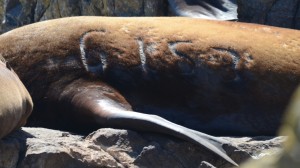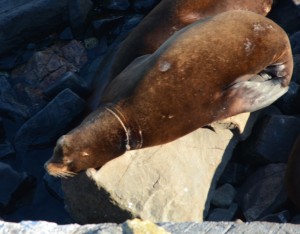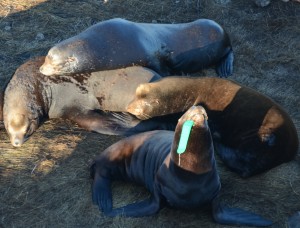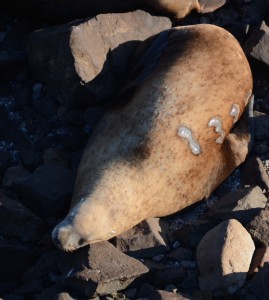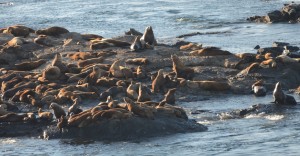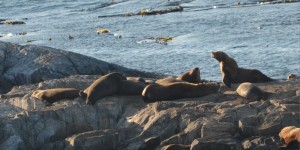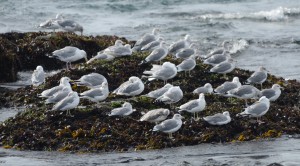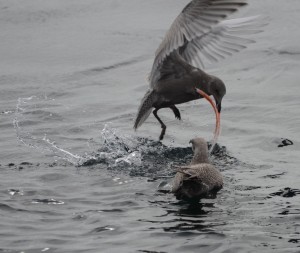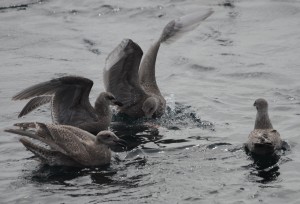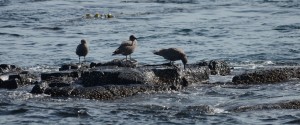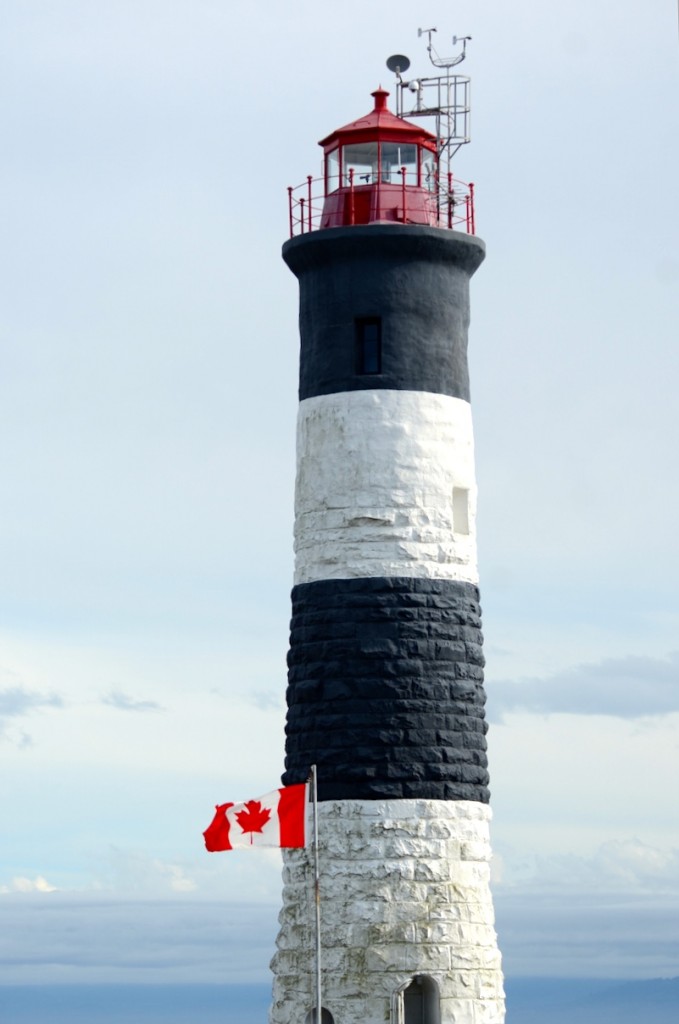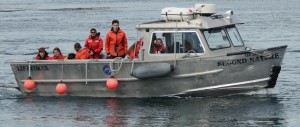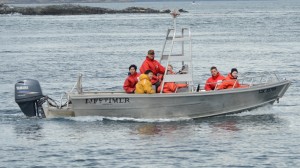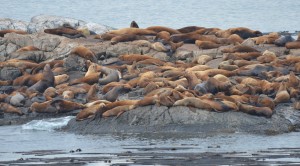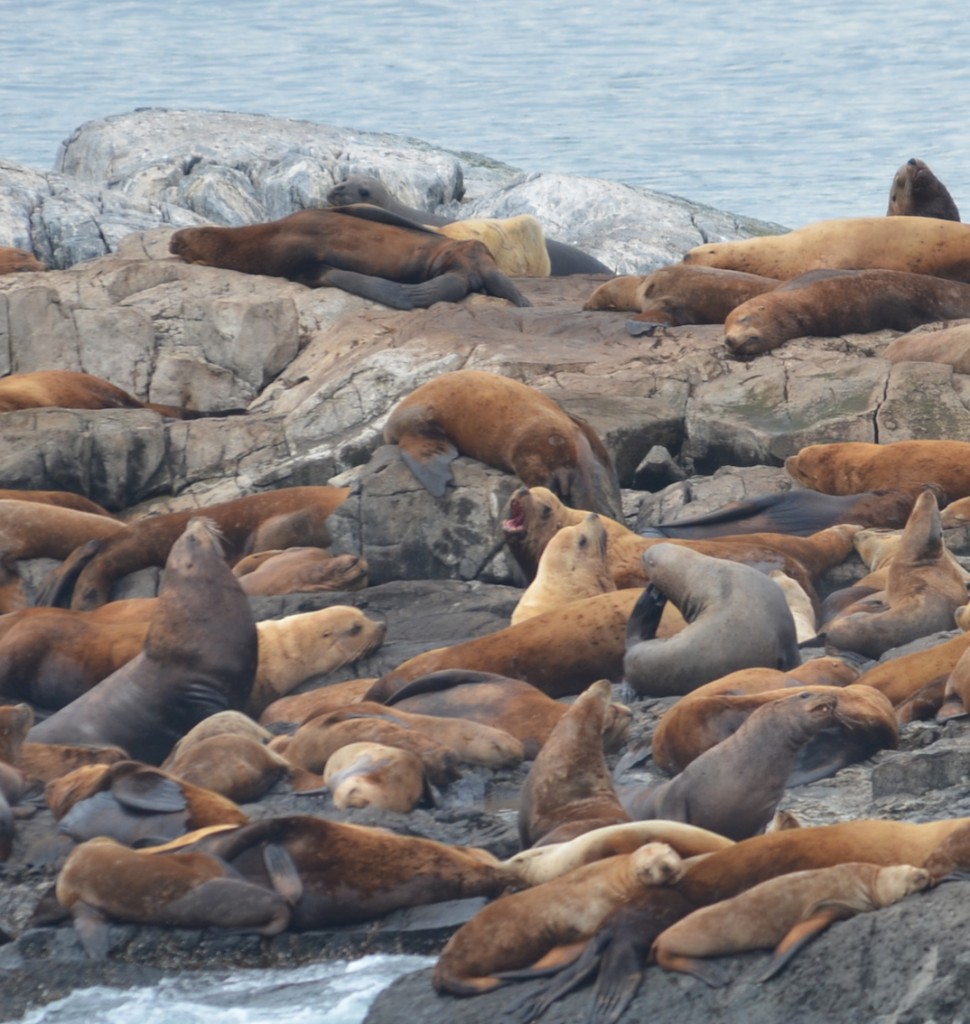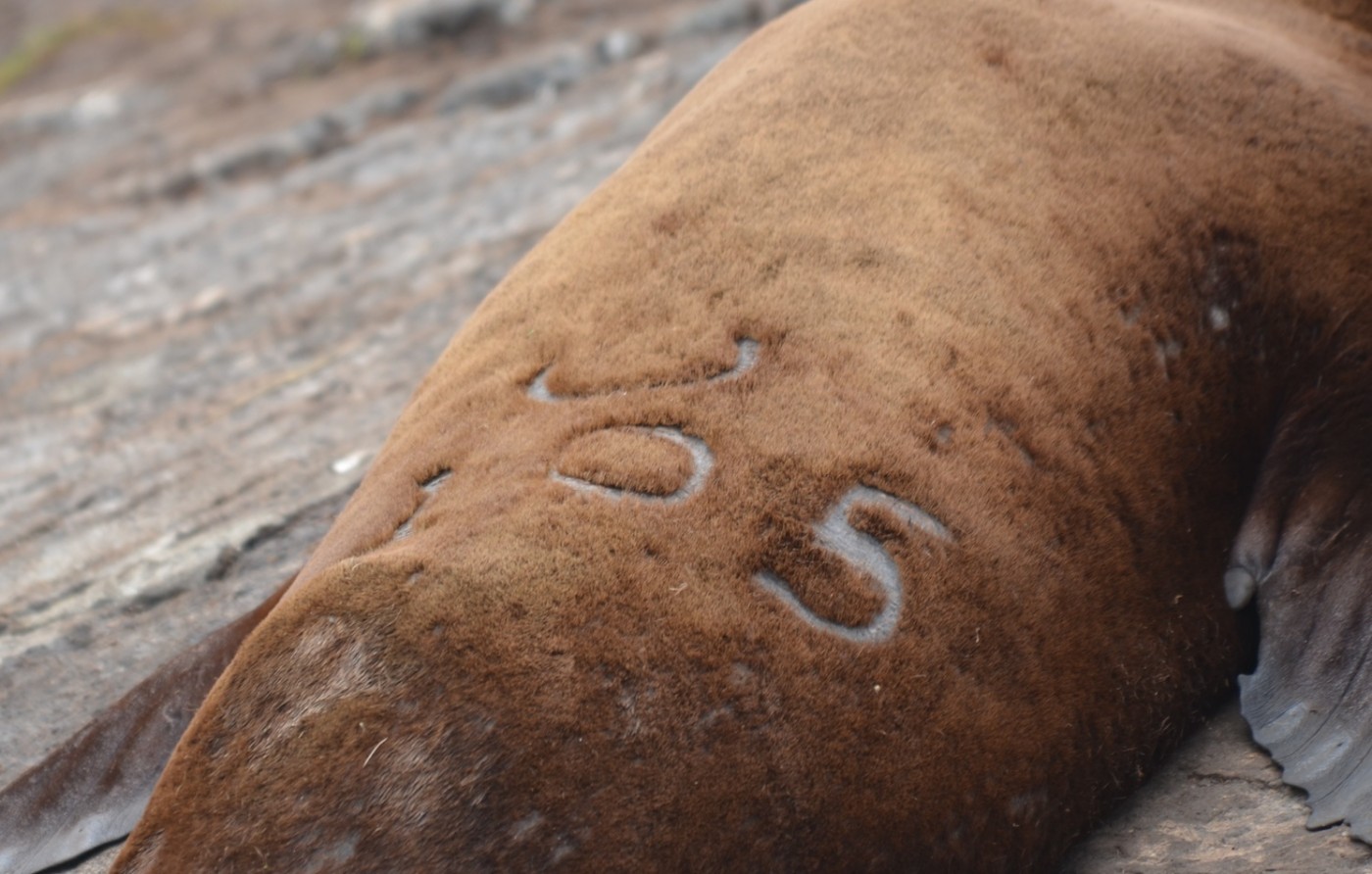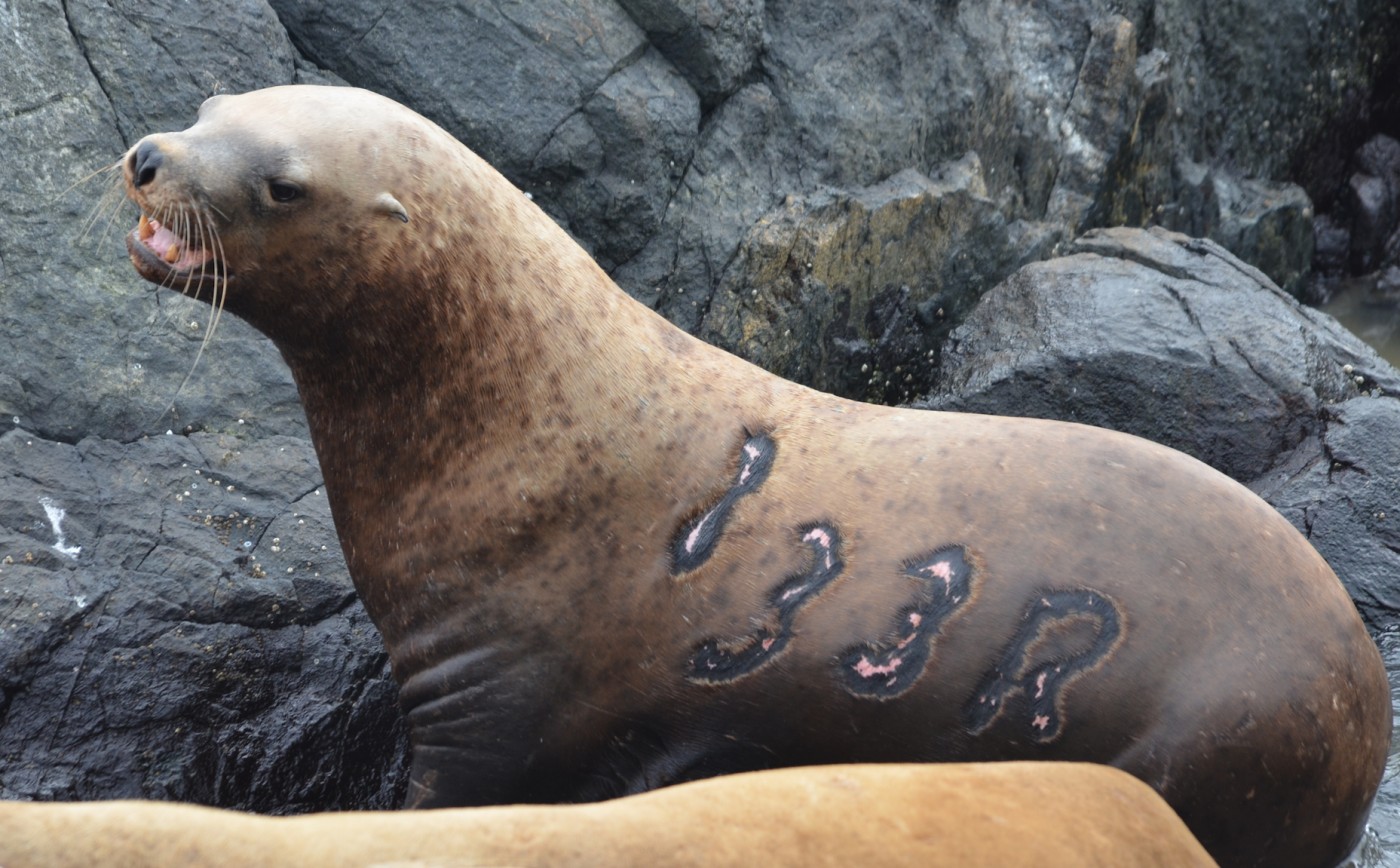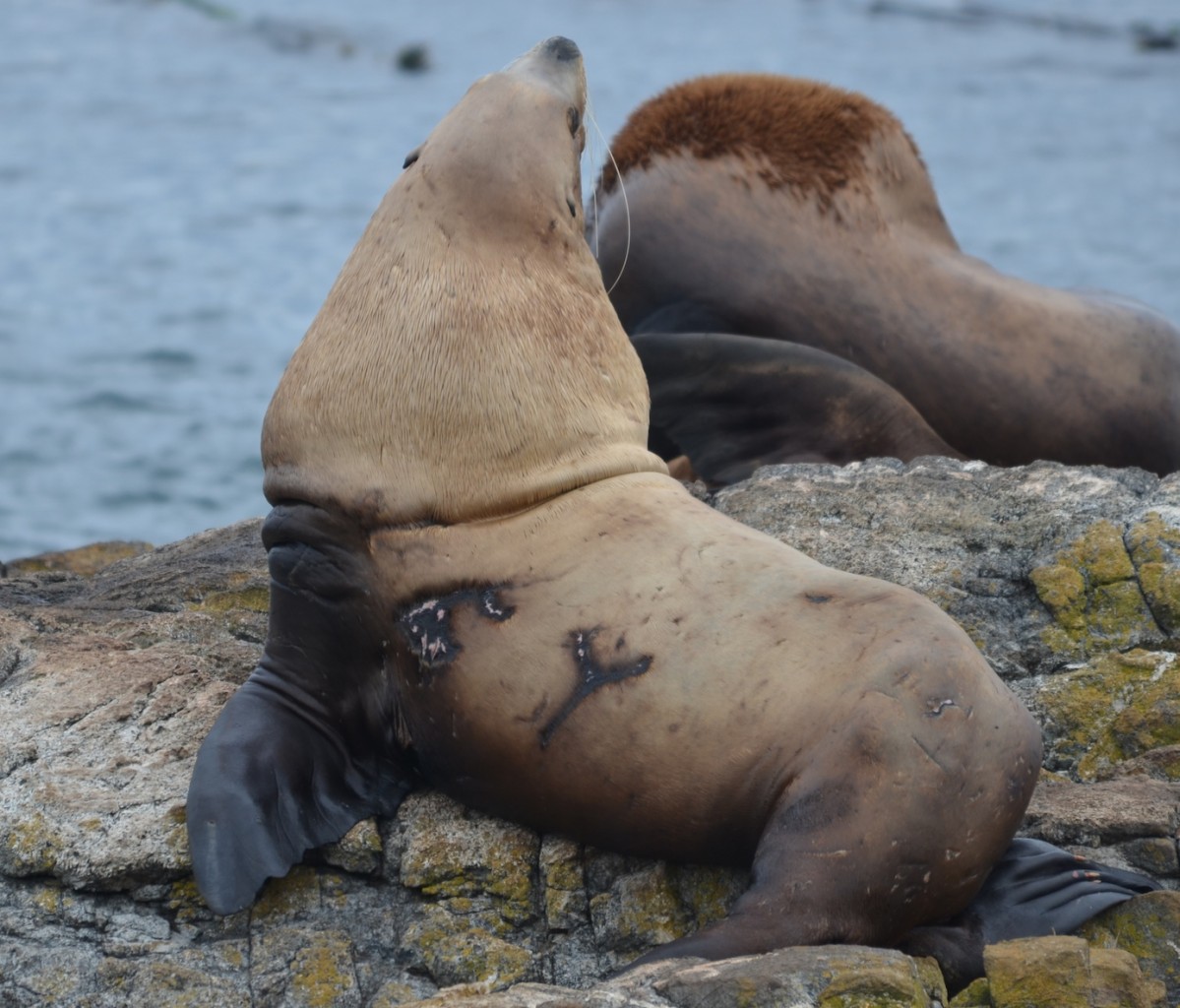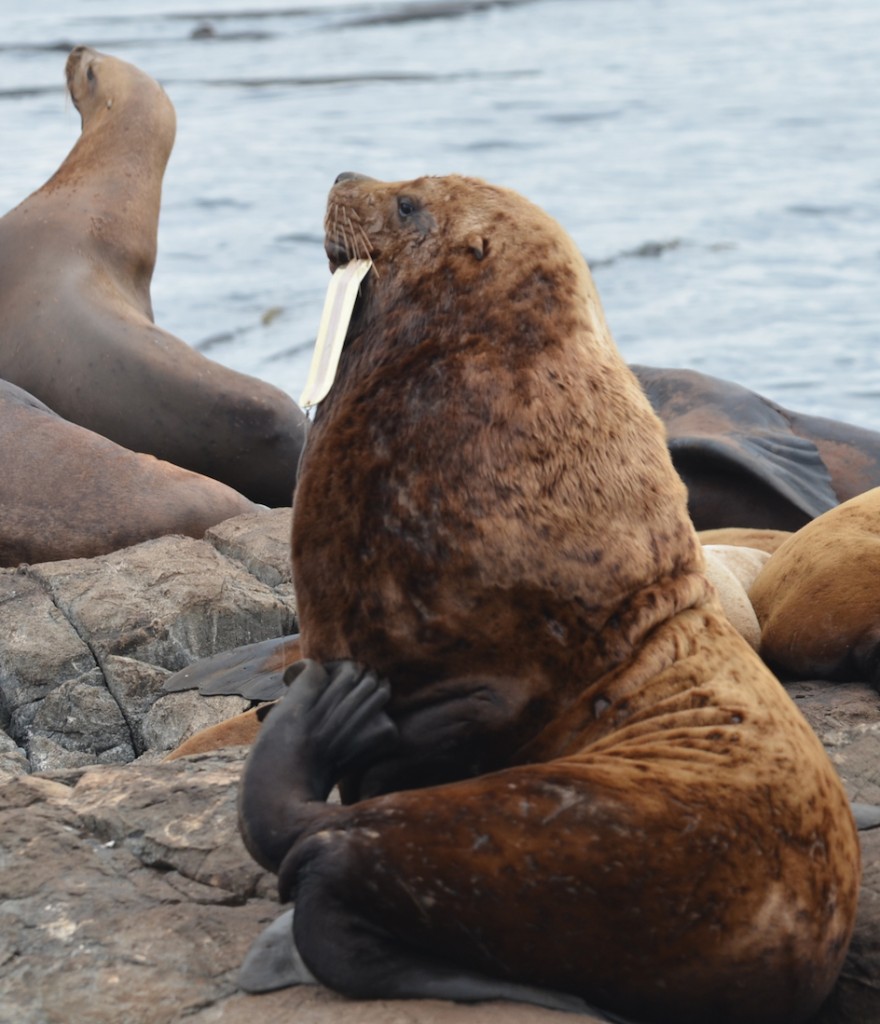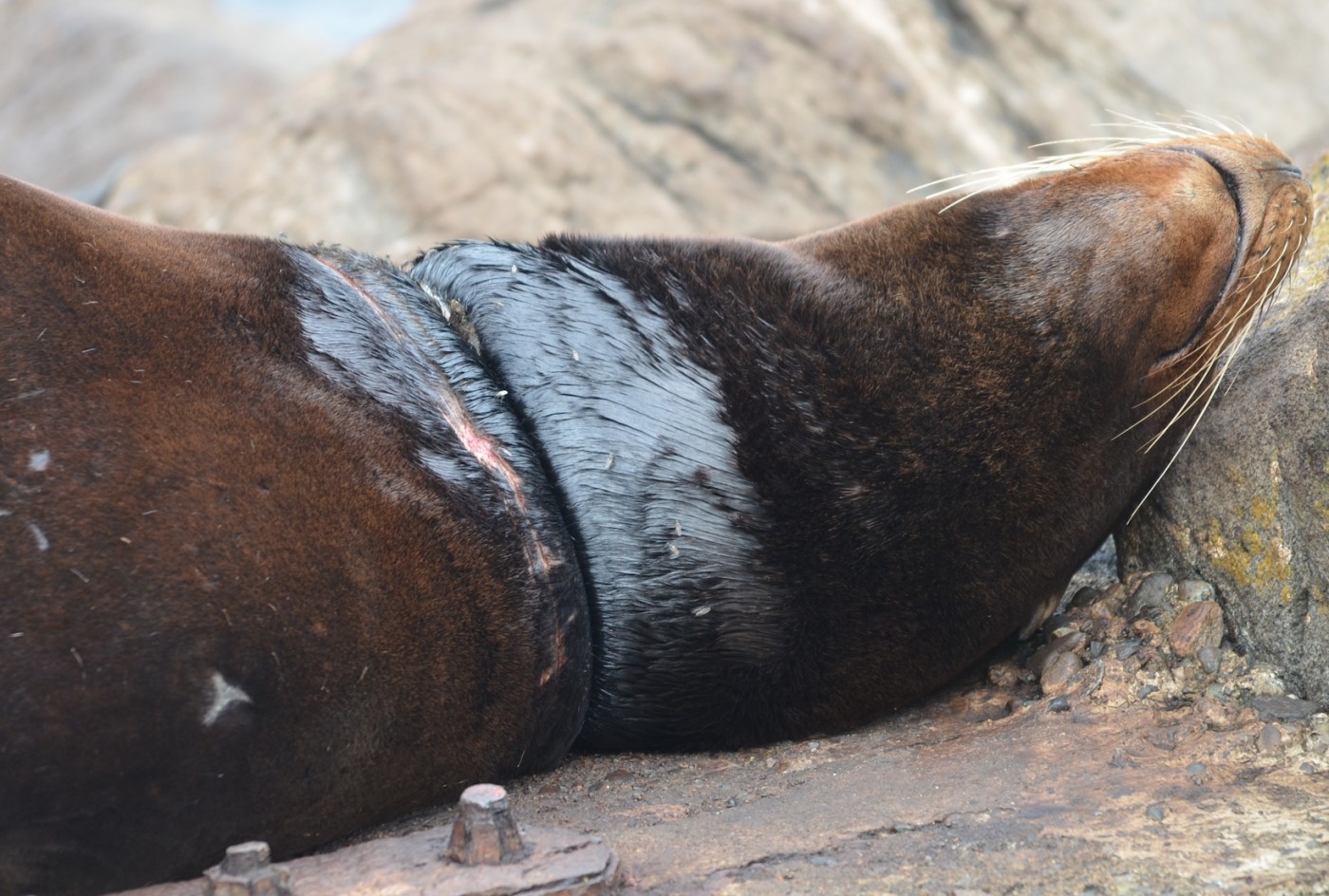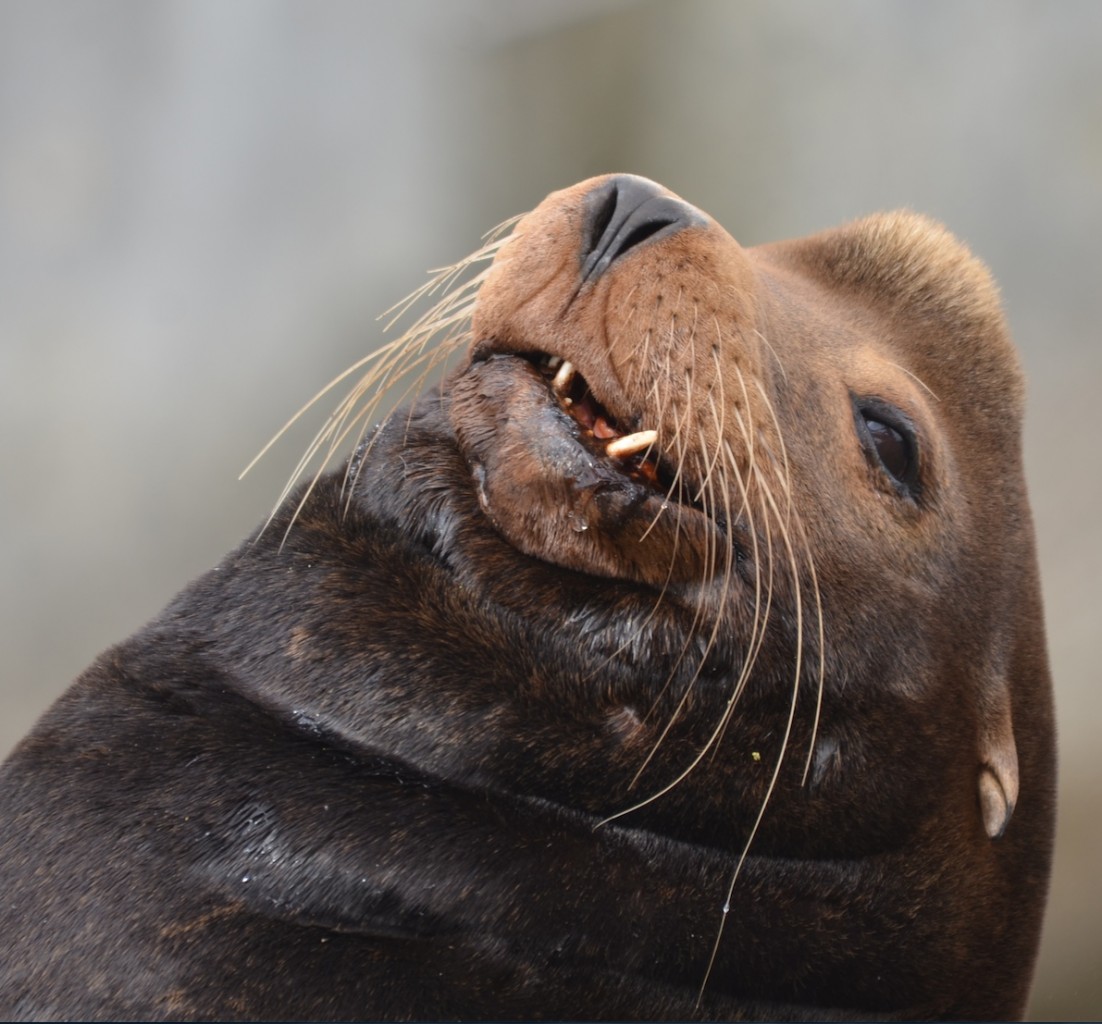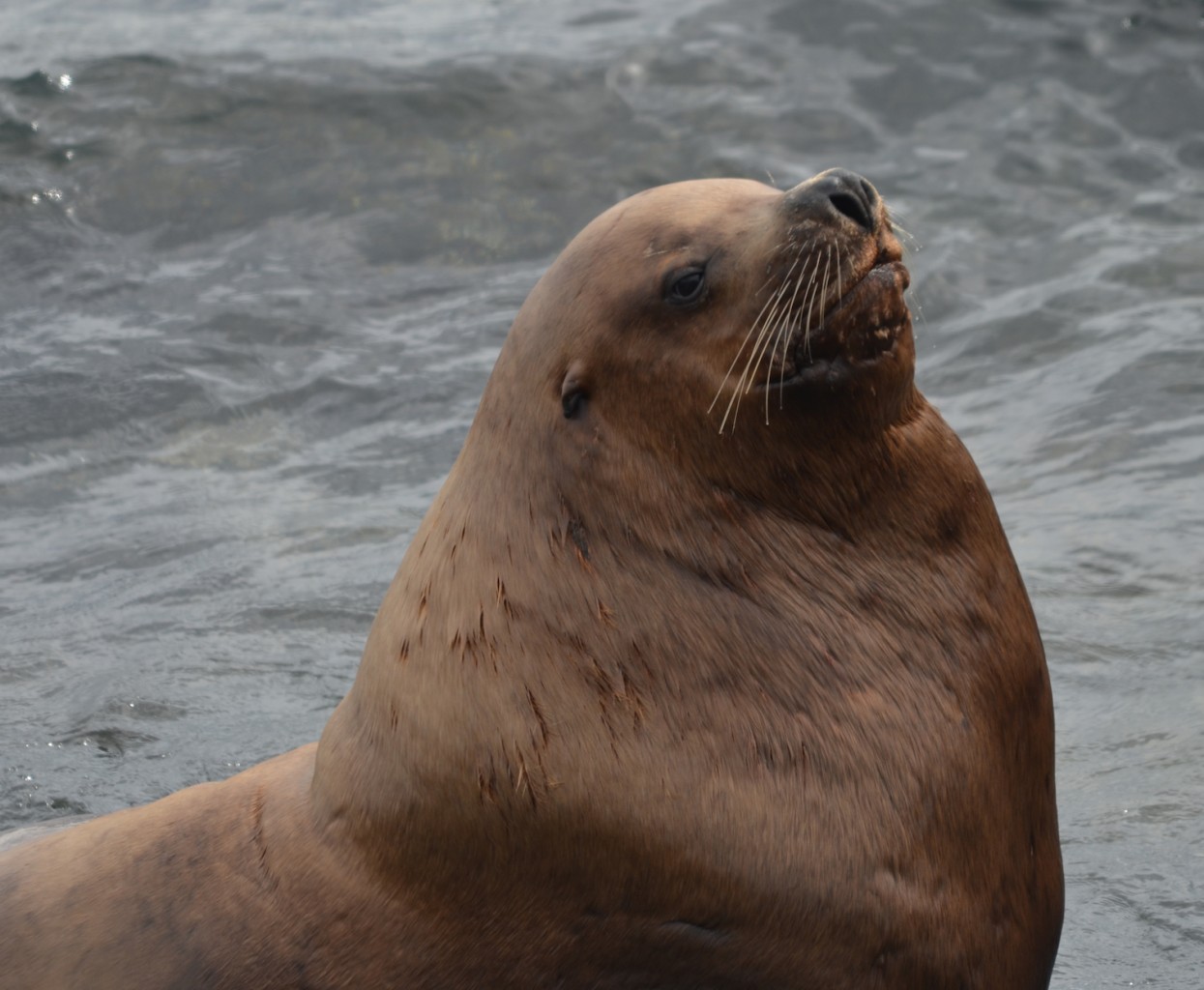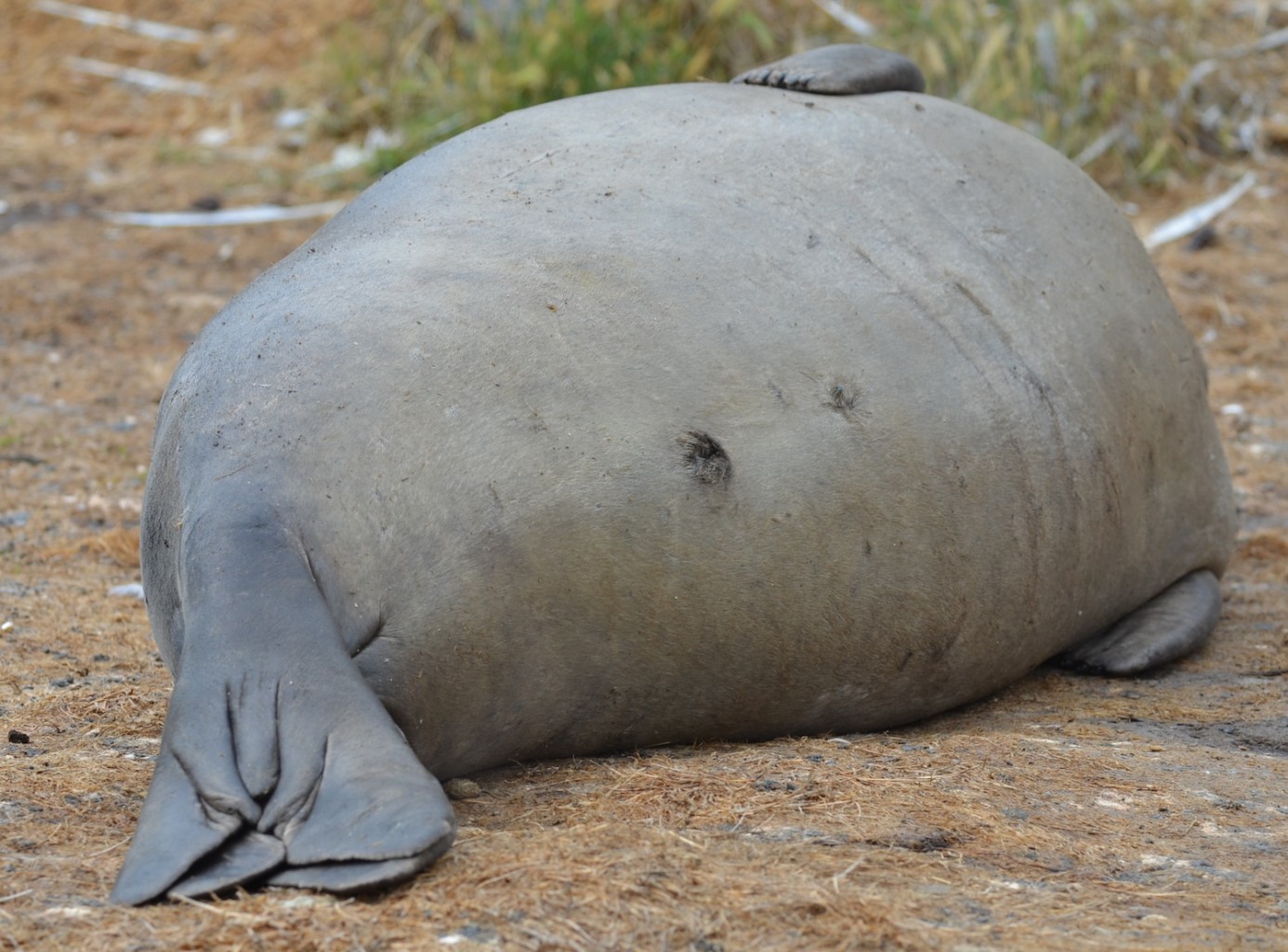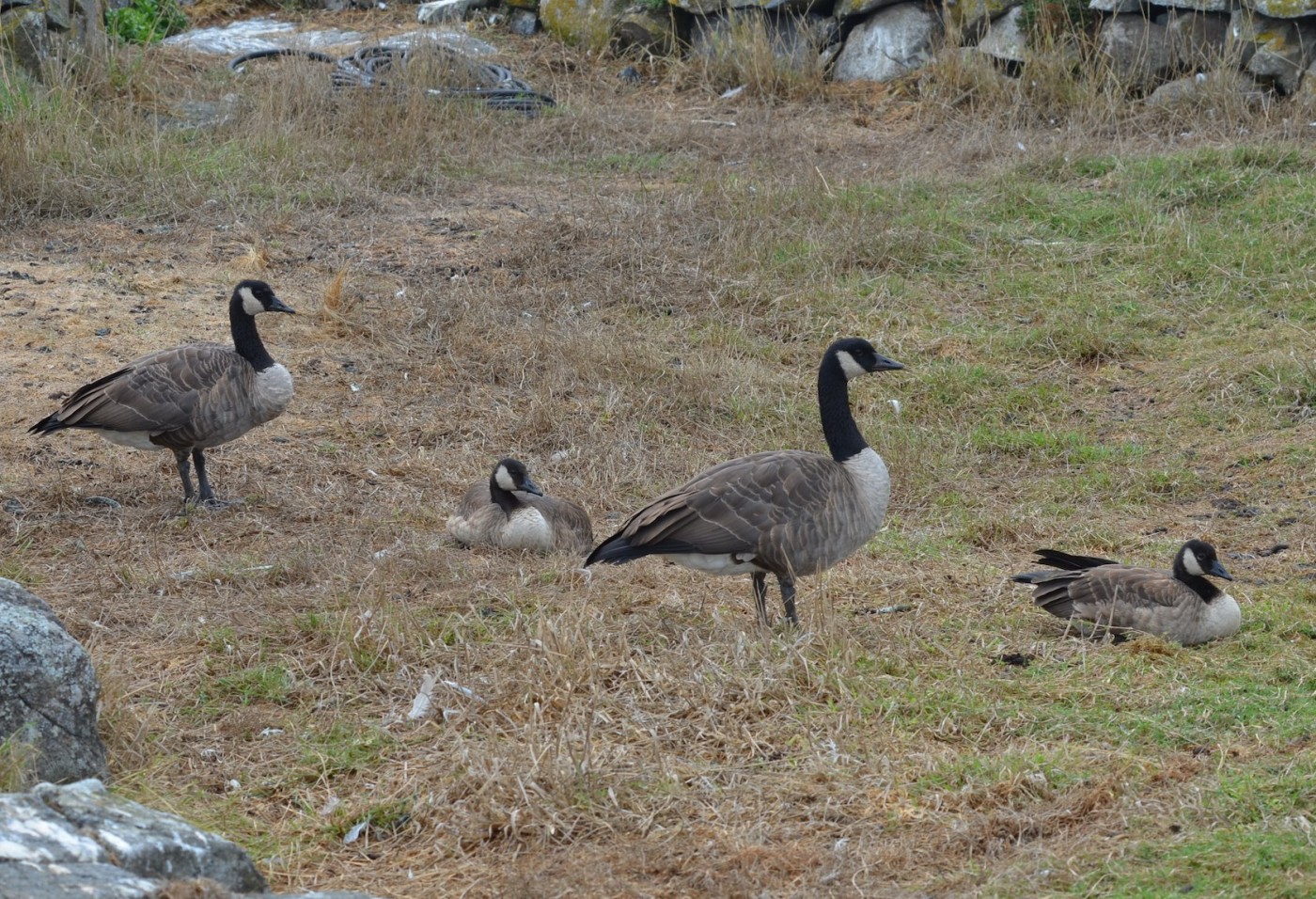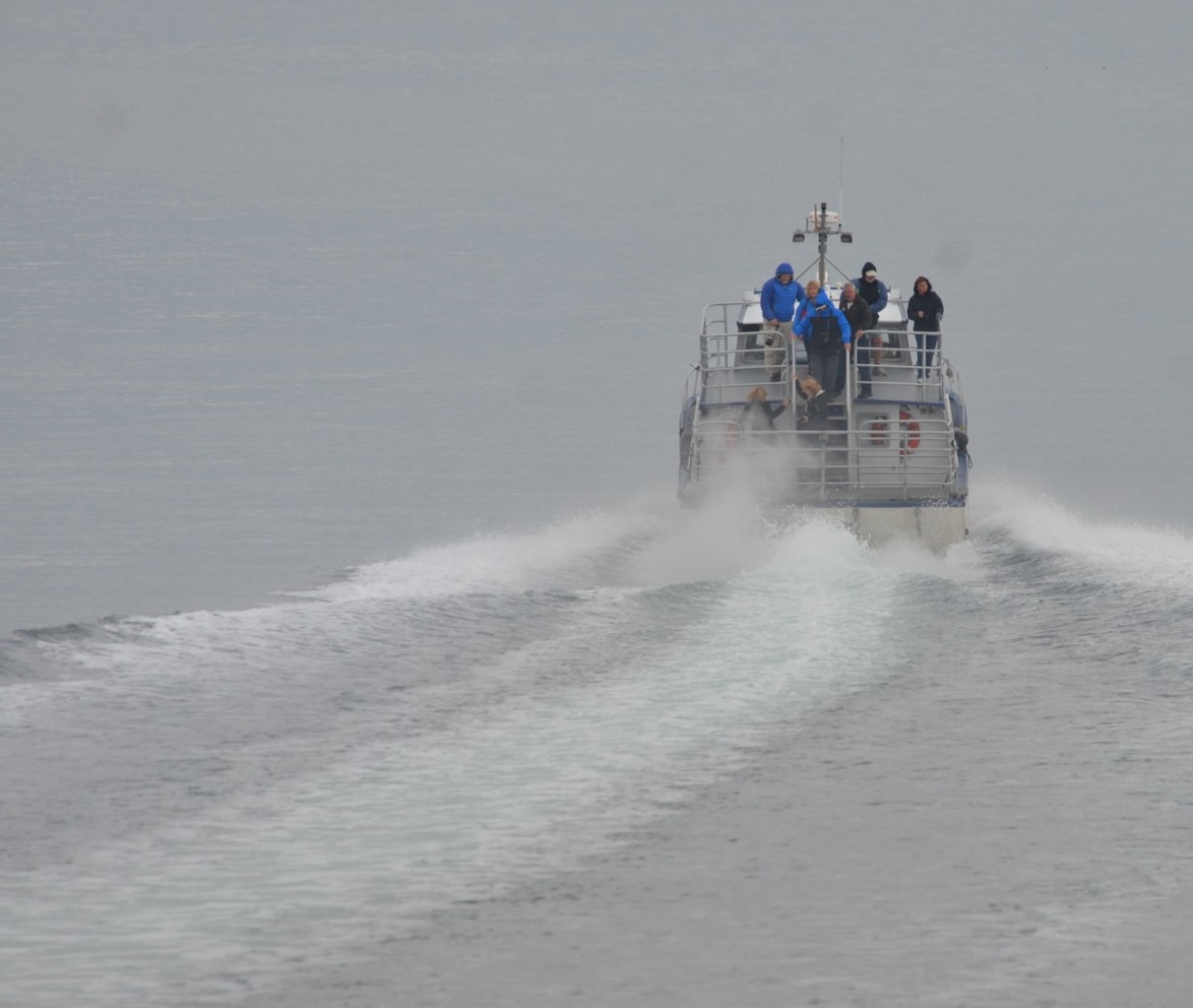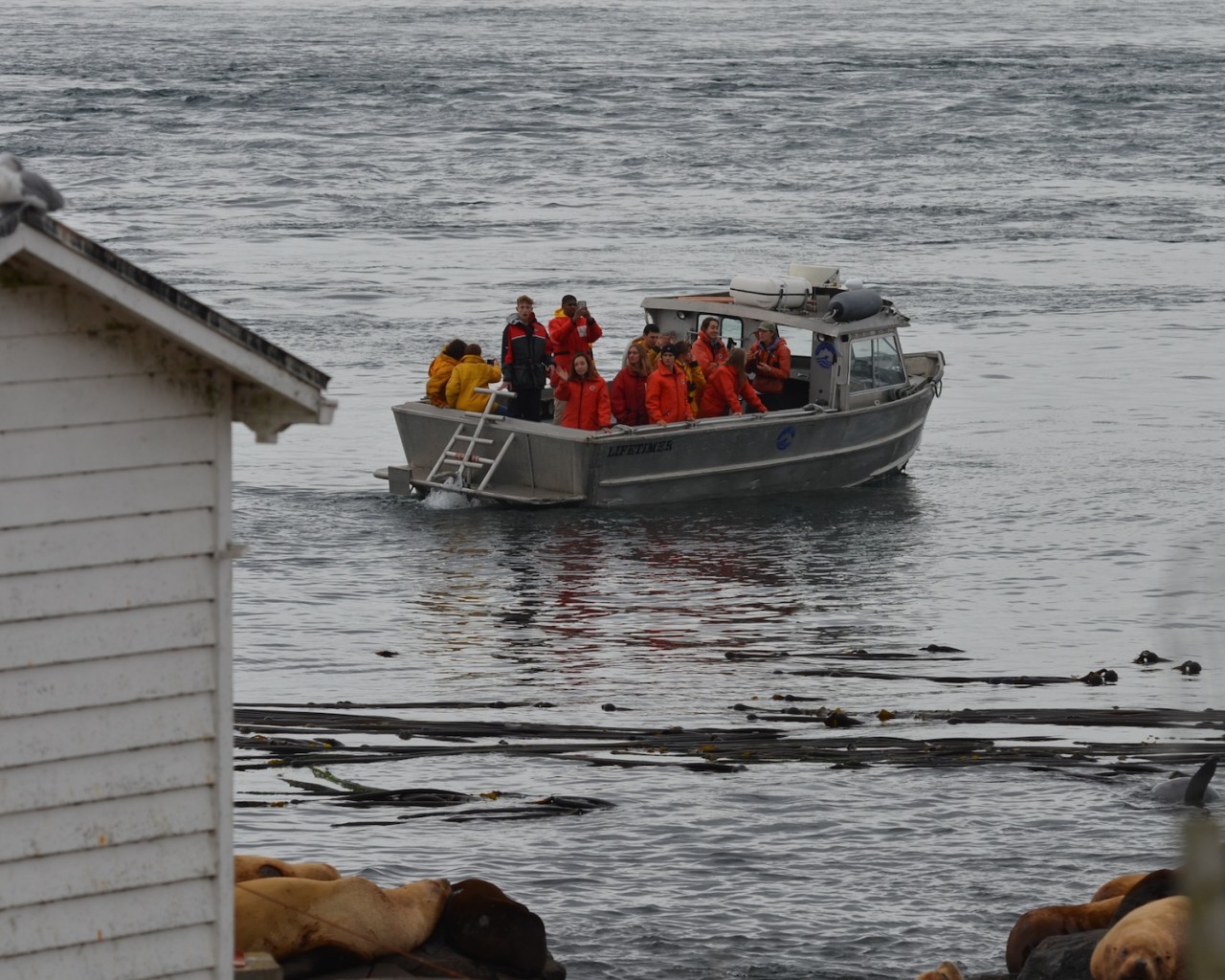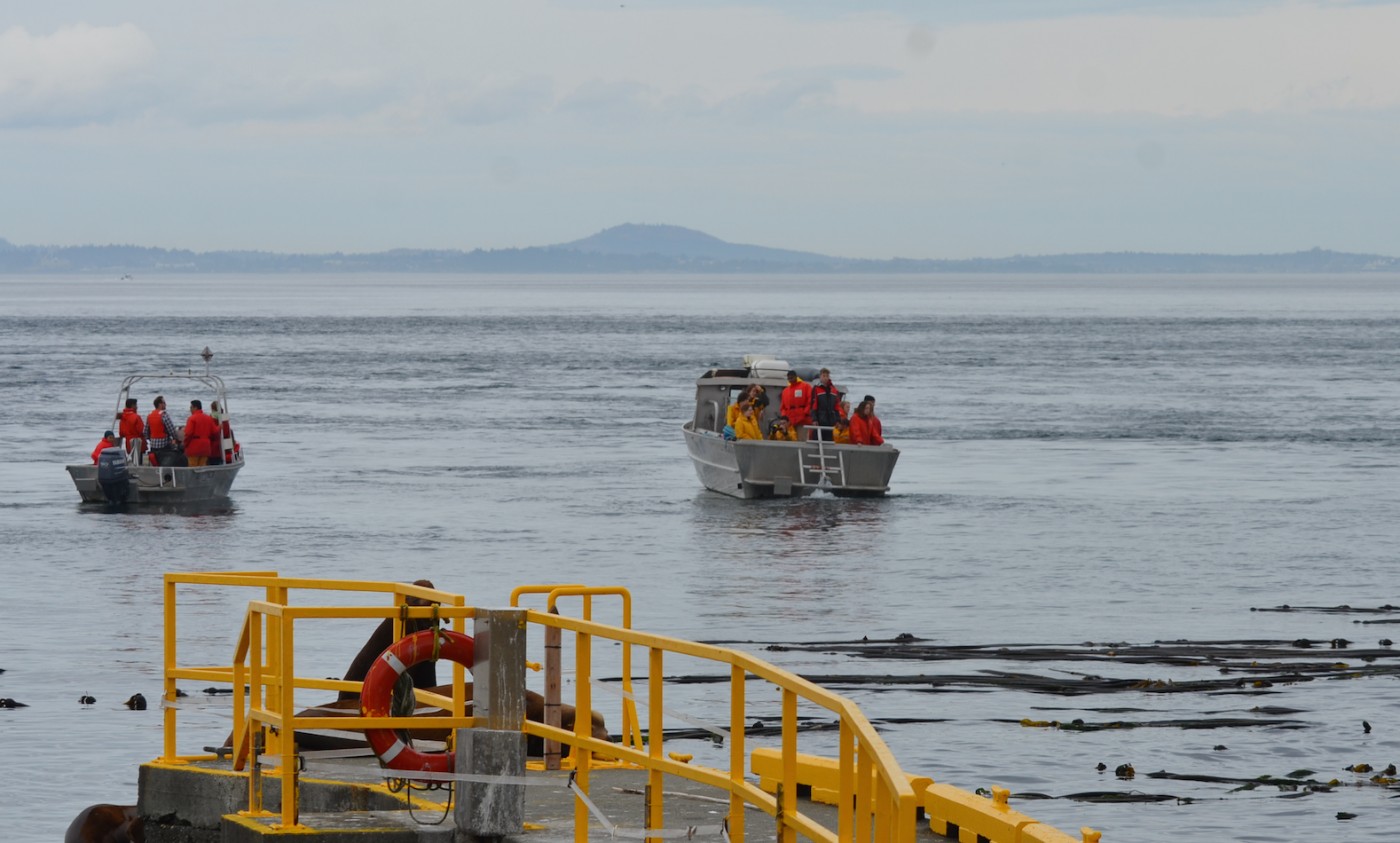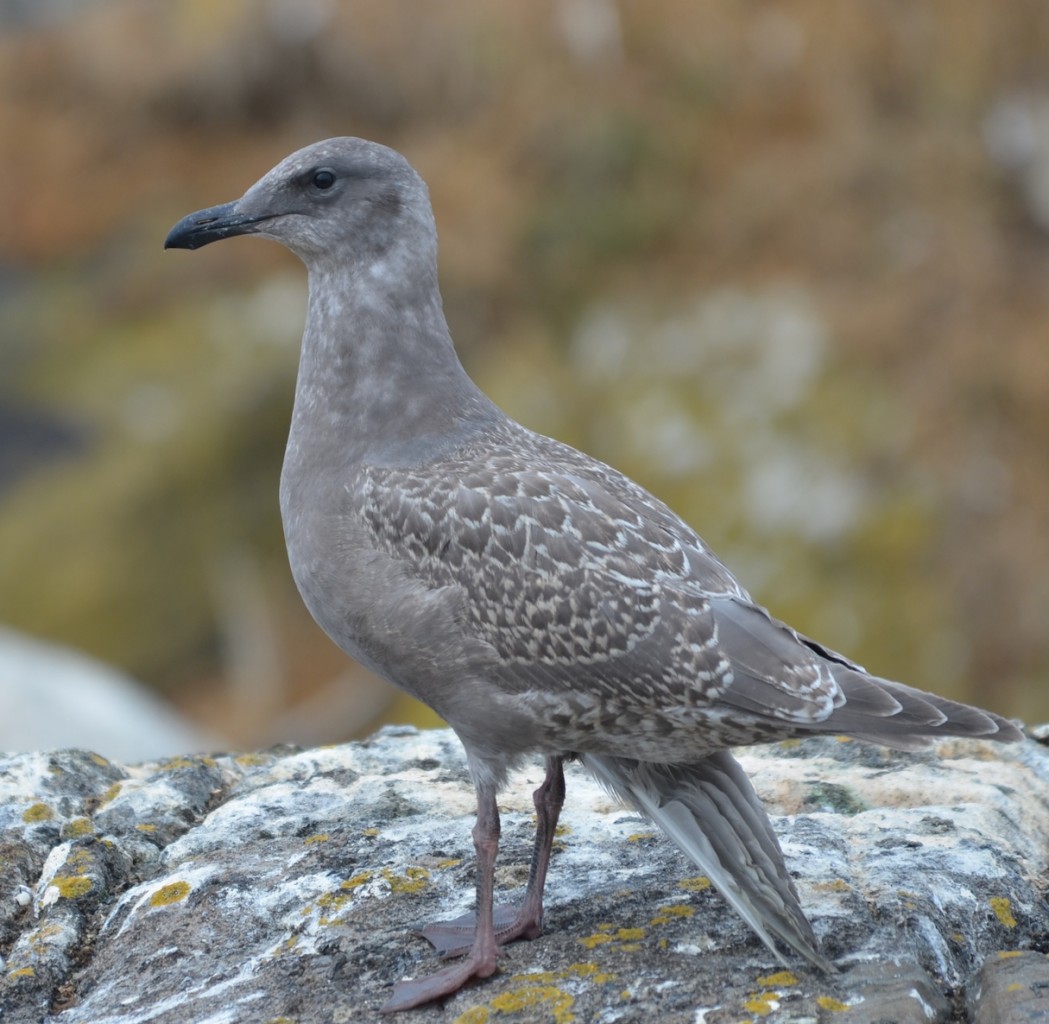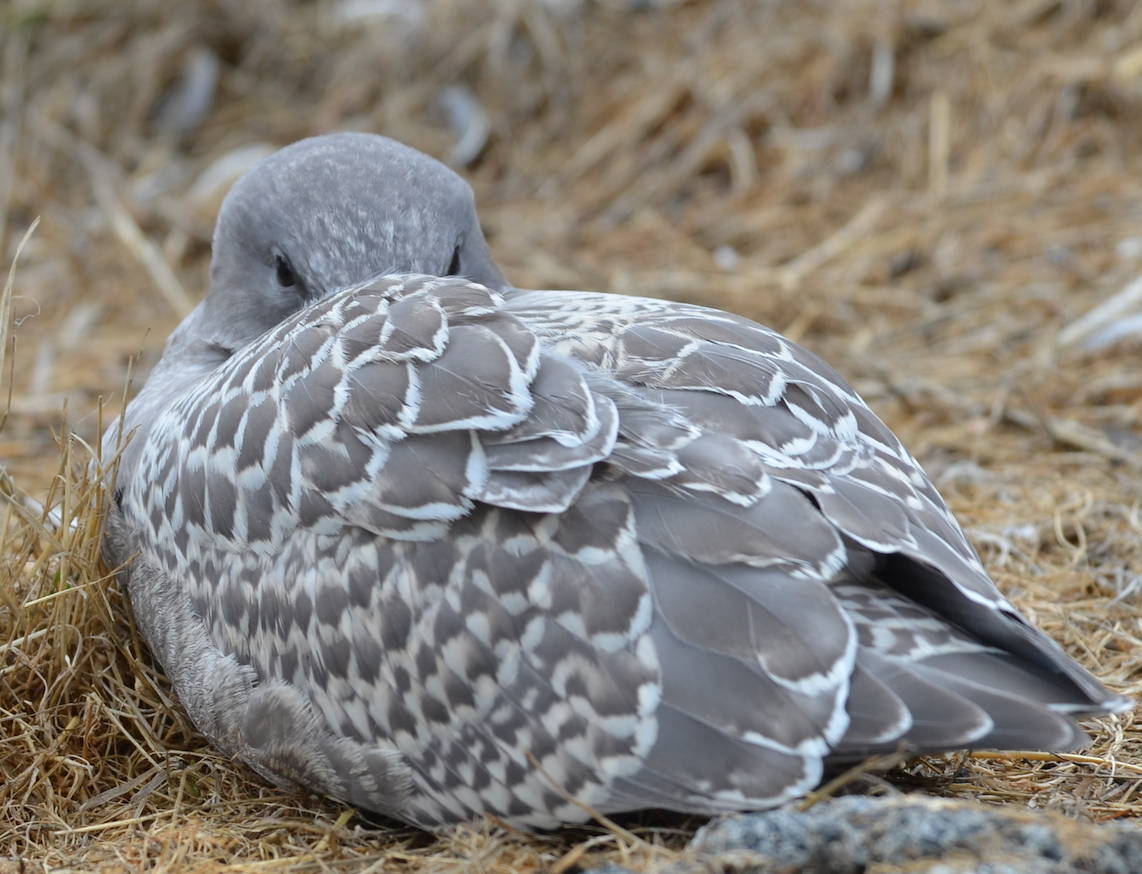The cool, wet weather these last couple of days at Race Rocks was a long time coming and the ceiling is still thick enough so that peak solar radiation levels are about half the norm for this month. The little bit of soil is sucking up the moisture and there is already some visible return of green, a colour almost defeated by the drought. The wind didn’t do much until late afternoon today and there was no wind most of the morning. By early afternoon it was up to 10 knots southeast, only to fall off again as it swung to a feeble southwest in the evening. The barometer continues to crawl out of the hole created by Saturday’s storm and it is almost back up to 1010hPa. From the forecast, it looks like periods of rain will continue as the cold front moves southward over the next few days and then we will be back into the summer pattern of westerly winds and possibly sunshine, if not fog.
There was quite a bit of whale watching activity in the area today. There were 18 visits made by commercial boats operating inside the Ecological Reserve and more outside. All but two vessels abided by the rules, taking it slow, being respectful and courteous to each other and mindful of the large concentration of animals in this protected area. From the radio chat and observations, I was able to ascertain that there were both Biggs’ and Southern Resident Killer Whales in the vicinity. Both pods passed just outside the reserve heading west about a half mile to the south. There was also a humpback feeding just east towards Victoria.
One, large, whale watching speeder may have taken his cue from the only “sports”-fishing boat that came into the reserve today. A Grady-White-type boat with halibut gear, came inside behind a line-up of whale watchers and then roared off from inside Middle Channel as if his urgency trumped the wildlife values in this congested area. Later one of the well respected companies had a large vessel observed taking off at speed after a visit to the sea lions, closer than 100m. I hope the animals in the water were able to get out of his way.
There were a number of sea lions with major wounds noted today and I will try to photo-document them on a drier day. Of note were fresh, severe gashes on at least three Steller Sea Lions and what appeared to be propeller marks on two Californians. Most of the sea lions spend their time sleeping when they are not off foraging or tussling with each other. The Californians that are awake though, are always barking.
I tried to document three branded California Sea Lions today but only succeeded in recording one full number without question, # 8228 on the left side. I got one partial # U_05 on the rump and another partial #U14__. I didn’t see any branded Steller’s yet.
-
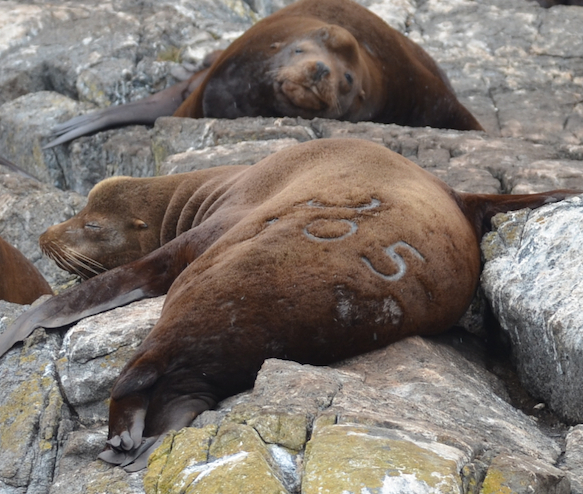
-
I will have to track this sea lion down again to catch the first number of its’ brand. I know from the ‘C’ or sideways U that it was branded near the Columbia River.
-
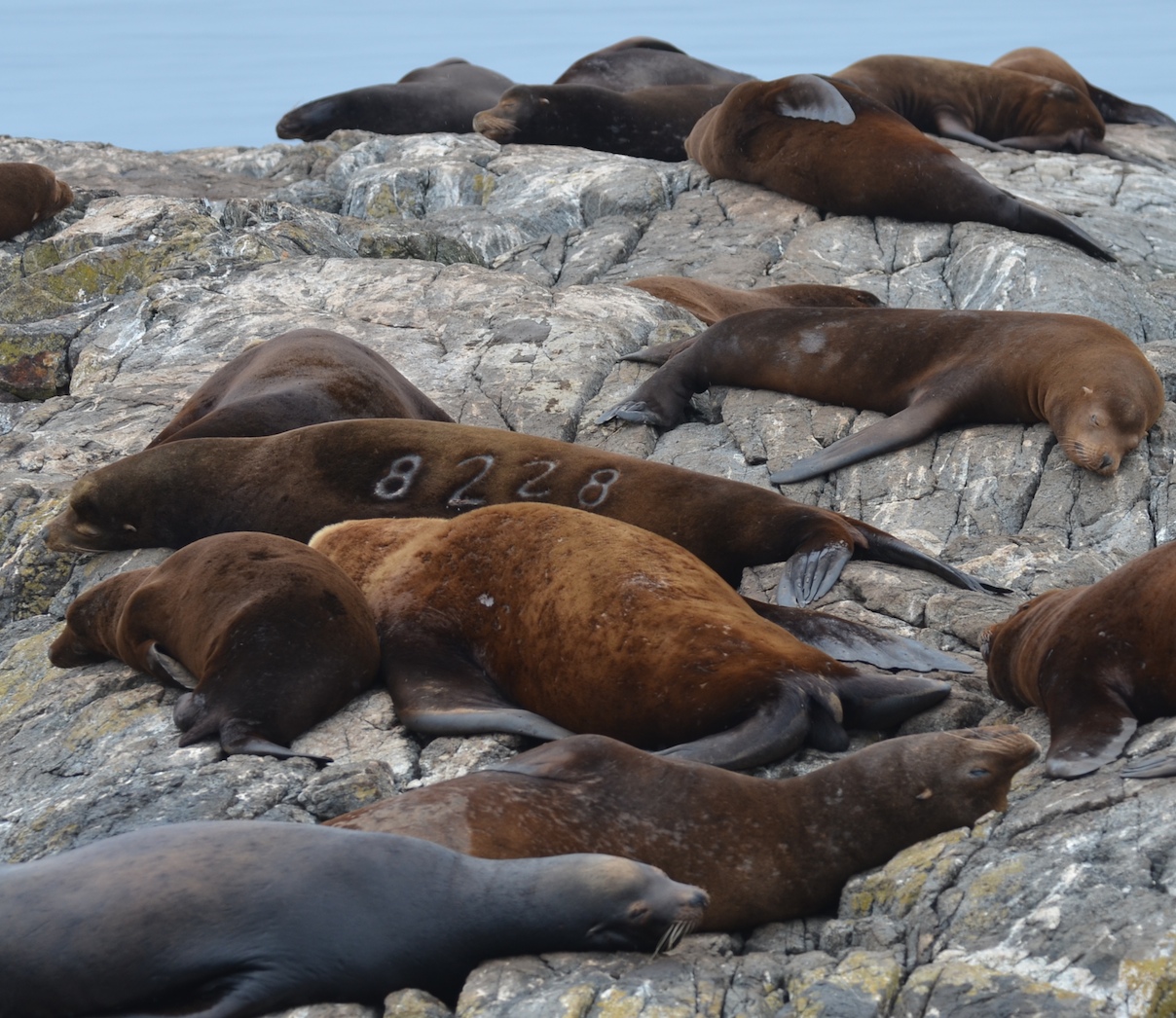
-
This sleeping California Sea Lion (middle) will be identified from its’ brand # 8228.
The pre-summer cast of avian characters, is back and it is really a privilege to be here again to witness Race Rocks as the change to autumn happens. I saw at least 95 Black Turnstones busy foraging all over the island today. They roost together on the south shore in the evening, making it easier to get a good count . They are back from a summer away at nesting sites along the western Alaskan shores of the Bering and Chukchi Seas. Cormorants probably didn’t go far but the Double-Crested Cormorants I saw today definitely do not nest in the reserve.
-
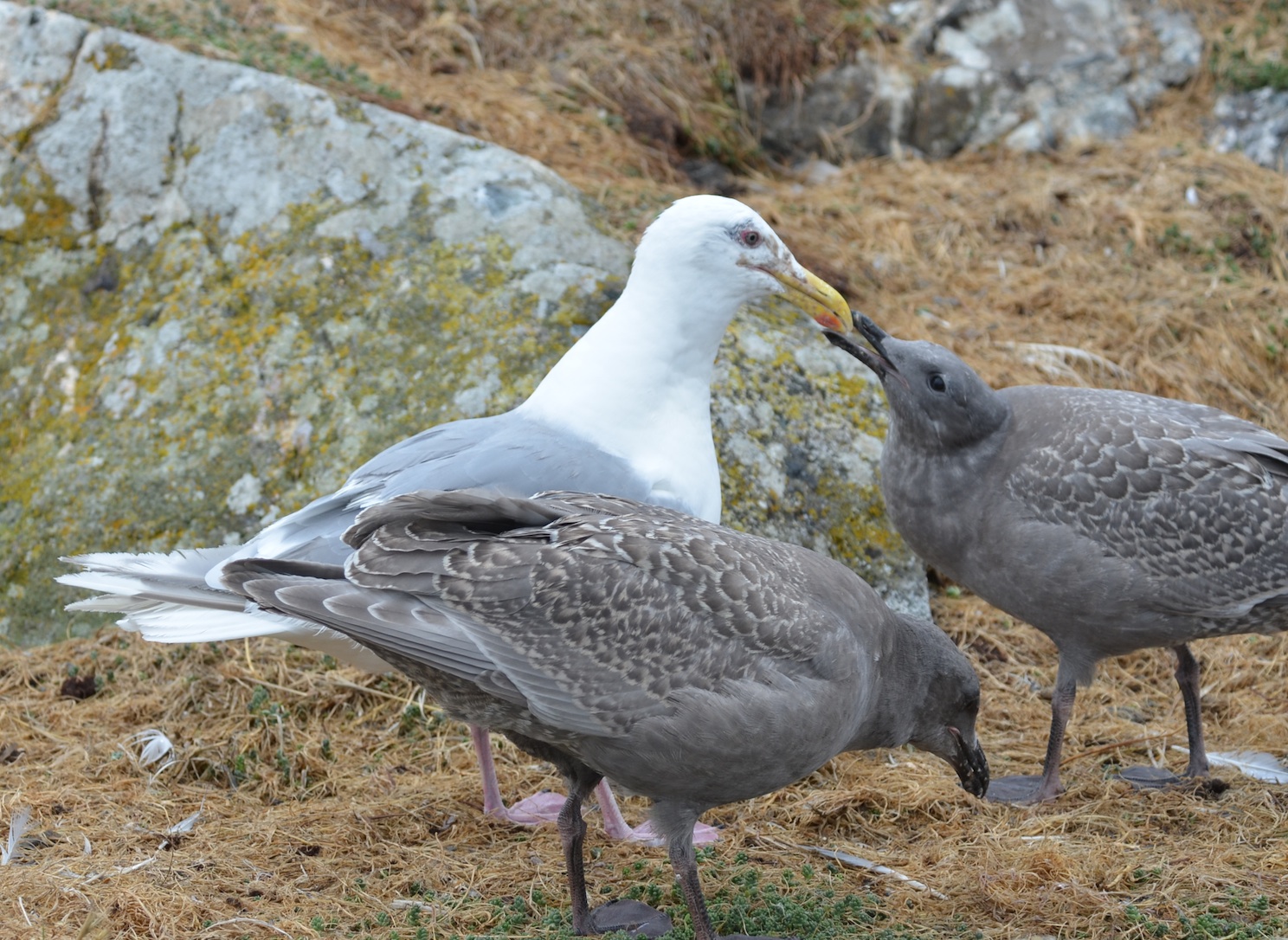
-
This adult gull looks like it may be near the end of its parental tether.
-
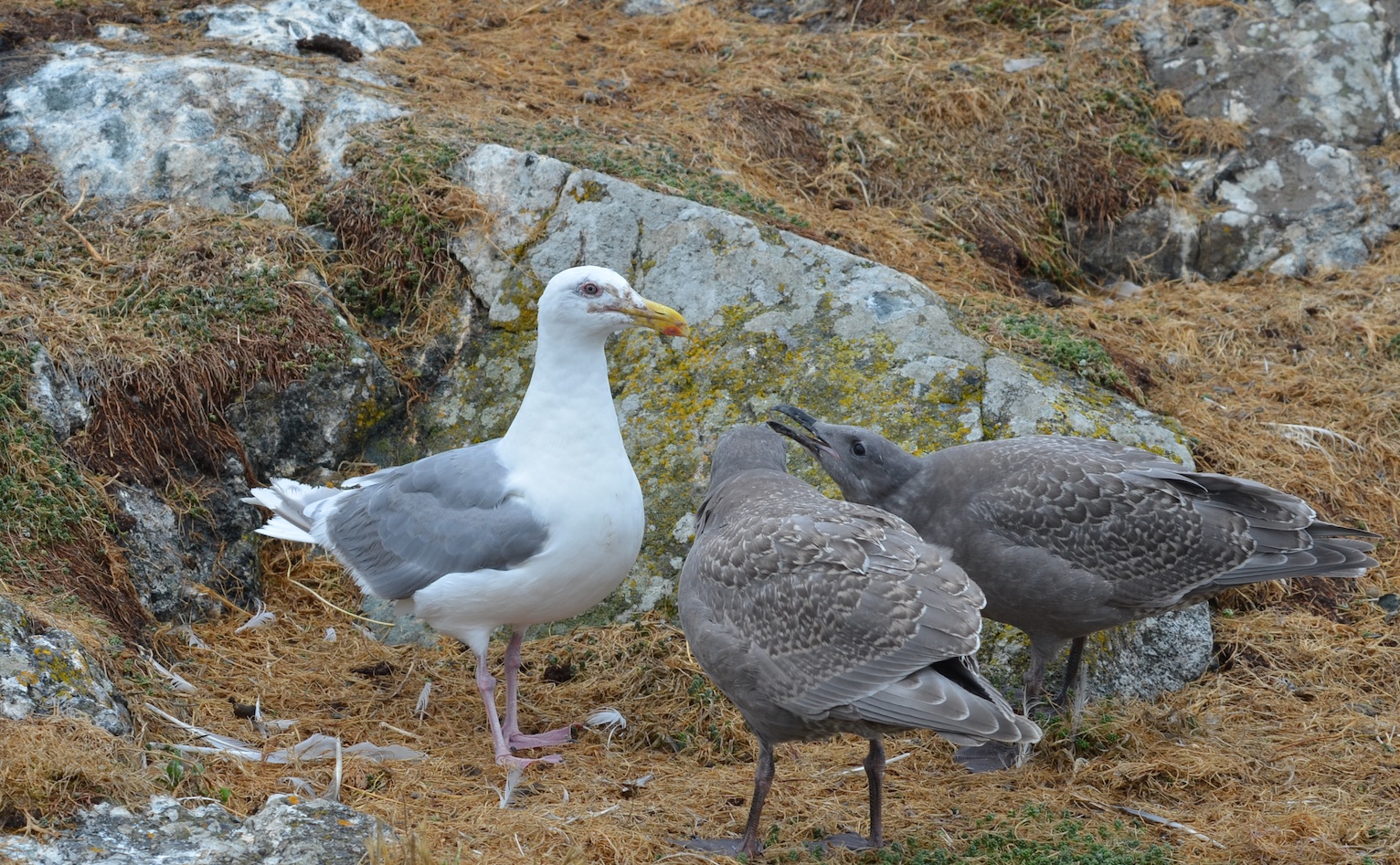
-
Nothing more to give.
Most of the Glaucous-winged Gull chicks have fledged and left the island but there are still a few slow pokes who are busy begging from worn-out looking parents for food. Amazingly some adults are feeding three big chicks that appear larger than the adult. There is evidence of fresh predation on these young gulls and River Otter is the prime suspect as it seems to be nocturnal or crepuscular activity and one of the remains was dragged right in to the otter den entranceway. As was noted last year, it appears that the head of the gull is enveloped in its neck skin as if the skin was torn and pulled up like a turtle-necked sweater coming off inside out.
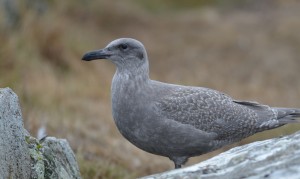
A newly fledged Glaucous-winged Gull still not confident enough to fly away on a new adventure.
The Northern Elephant Seals surprised me. I knew there was one here on the marine railway ramp on Great Race because Guy and Christine had mentioned it and it hauled out just before they left yesterday. It is a really well fed young one, completely plumped out since I last saw them after their horrendous moulting fasts of the late spring. Another five Northern Elephant Seals are visible with the scope from the top of the tower, on Middle Rocks amidst the sea lions. Of the five, one appeared to be very small, perhaps young of the year and the other four were larger juveniles perhaps including a small adult female. I will try to get a better handle on this in the days to come.
There were no visitors today as I got back into routine chores and was constantly reminded of the incredible natural setting that makes this place so special.

